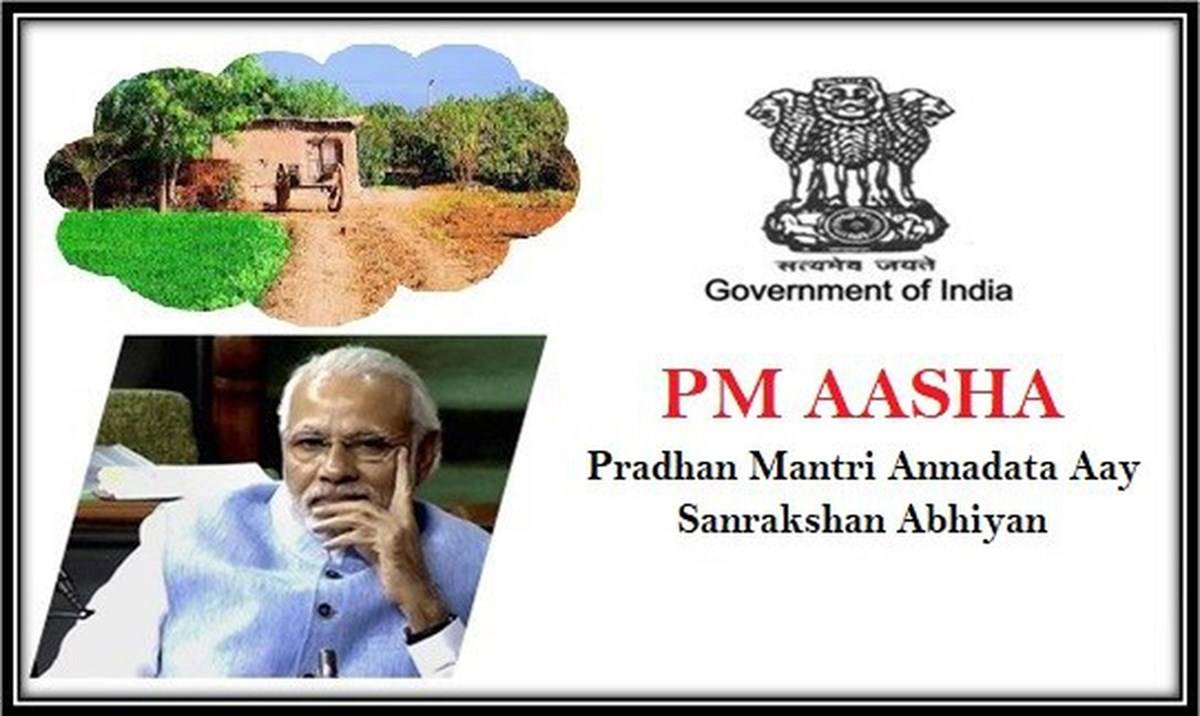
PM AASHA or Pradhan Mantri Annadata Aay Sanrakshan Abhiyan is the scheme that has been introduced by the Central Government to plug the holes in the procurement system and to address the gaps in the MSP, Minimum Support Price scheme.
This scheme is the mixture of three sub-schemes
Aim of PM AASHA
The aim of this umbrella scheme Pradhan Mantri Annadata Aay Sanrakshan Abhiyan is to ensure the remunerative prices to farmers for their produce. This scheme is expected to complement the increase in MSP which will be translated to farmer’s income by way of a robust procurement mechanism in coordination with the states.
Components of PM AASHA
There are three components of this umbrella scheme, and their aim is to enhance agricultural productivity, reduce the cost of cultivation, and in turn, will enable securing farmers’ income in the long run.
-
Price Support Scheme (PSS)
As per this scheme, physical procurement of Pulses, Oilseeds, and Copra will be done by NAFED, Central Nodal Agencies with proactive role of state governments. In addition to NAFED, FCI (Food Cooperation of India) will take up PSS operations in states & districts. And losses, if any incurred by NAFED in undertaking MSP operations are reimbursed by the Central Government. And profit, if any earned in undertaking MSP operations is certified to the Central Government.
For more information, click here.
-
Price Deficiency Payment Scheme (PDPS)
This scheme is aimed to ensure remunerative price to the producer of oilseeds whose MSP are notified by the government of India and when sold in the harvest season without the actual procurement by the government agencies. The aim of this scheme is to compensate farmers by paying them the difference between the government-decided MSP and the actual market price for c ertain crops.The scheme envisages direct payment of the difference between the MSP and the market price to the farmers selling their produce in the notified APMC yard through a transparent auction process. The support of Central Government for PDPS is given as per norms.
For more information, click here.
-
Pilot of Private Procurement & Stockist Scheme (PPPS)
The primary objective of PPPS is to assess the workability of private agencies in the procurement operation at MSP. So, in addition to PDPS, it has been decided by the government that for oilseeds, states have the option for the participation of private sector in the procurement of oilseeds. The selected private agency shall procure the commodity at MSP in the notified markets during the notified period from the registered farmers as per the PPSS guidelines, whenever the prices in the market fall below the notified MSP and whenever authorized by the state government to enter the market.
For more information, click here.
Benefits of PM AASHA
-
PM AASHA scheme will help to bring back the rural economy by assuring better income to farmers.
-
Three components of PM AASHA will cover the gaps in the procurement and compensation mechanism for crops.
-
This is an innovative, MSP-plus approach to solve the problem of no remunerative prices.
-
With better prices for the crops, this scheme will ensure crop diversification and reduce the stress on soil and water.








